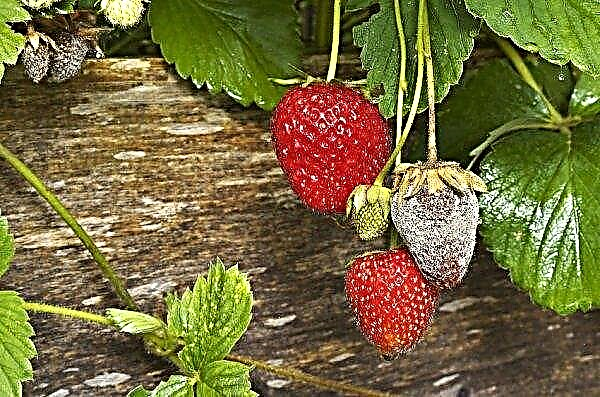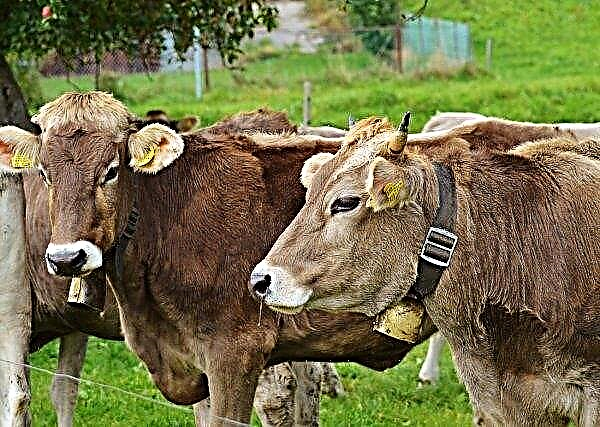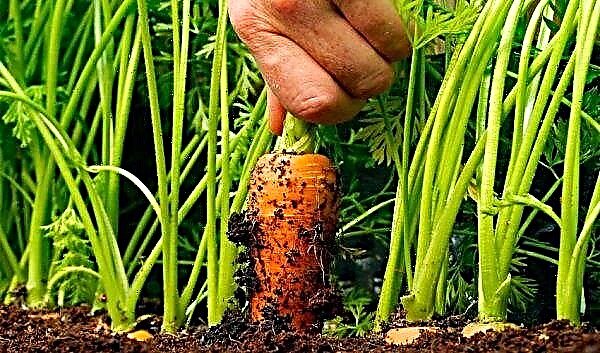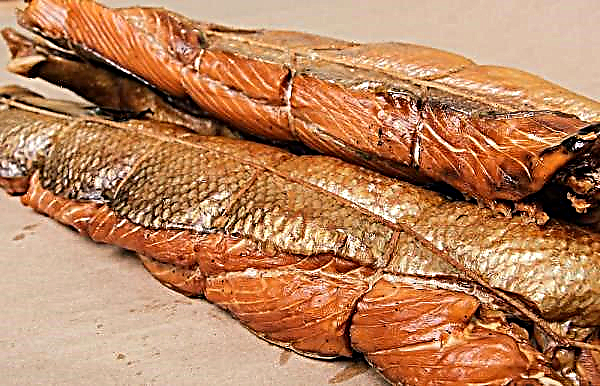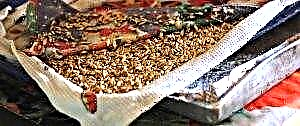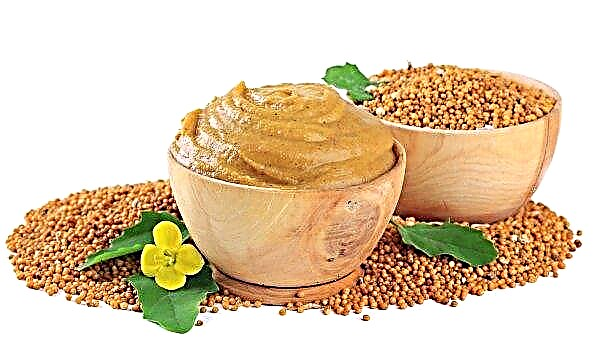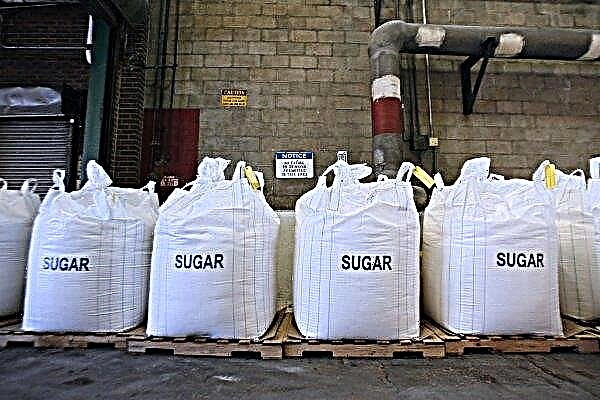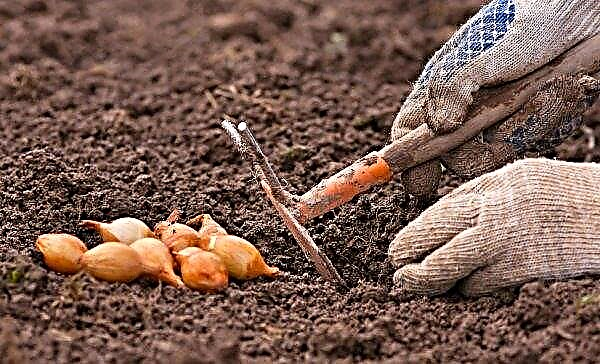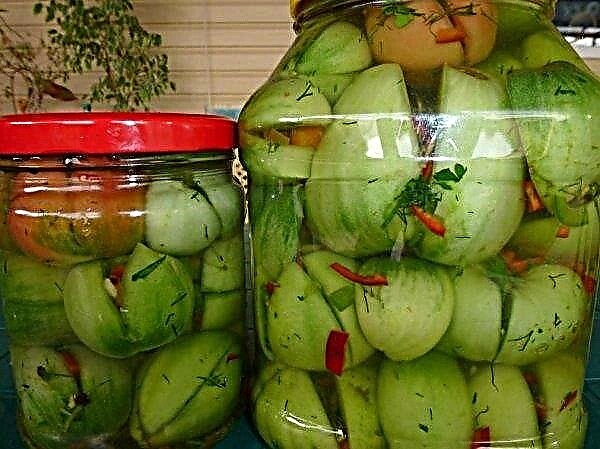Blackcurrant is a rather unpretentious culture with healthy and tasty berries. But she, like other horticultural crops, often suffers from attacks of a currant bud mite. He is able to completely destroy not only the crop, but the entire bush. In this article, you can learn how to deal with a pest and select the right drugs for its destruction.
What does a kidney tick look like
The harmful insect belongs to the four-legged group of ticks. It is an elongated white worm with 2 pairs of legs. The size of females reaches 0.02 cm, males - several times smaller. That is why it is very difficult to see it on the affected plant. Ticks inhabit the buds and other formations on the plant, protecting themselves in this way from bad weather conditions. Pests have a piercing-sucking mouth apparatus, due to which the juice is sucked from the plant.

Female ticks are very fertile: from March to November, one individual can breed up to 5 new generations, which is almost 40 thousand copies. The most active breeding occurs in the spring, when the air temperature reaches + 5 ° C.
Intrarenal development of larvae lasts 1-2 weeks. After that, they destroy the contents of the native kidney and switch to new shoots, flower and vegetative buds. At this point, pests can move to neighboring bushes due to wind, birds, rain or clothing.
Did you know? 3000 can be in one kidney–8000 ticks. In this case, the kidney swells very much and in the context resembles a head of cabbage.
Causes of currant damage
There are several different reasons why a kidney tick can harm currant bushes. These include:
- Drought and heat. Such conditions are most favorable for the propagation of pests, so they are more actively distributed in fruit bushes.
- Lack of organic fertilizers in the soil. Due to a lack of nutrients, the plant weakens and is attacked by a tick.
- Infection with viruses from other cultures. If the diseased plants are not timely eliminated, then they will transmit the infection to neighboring bushes. This attracts pests.
- Excessive dust on the leaves. The absence of prolonged irrigation leads to dustiness of plants, which contributes to the appearance of insects.
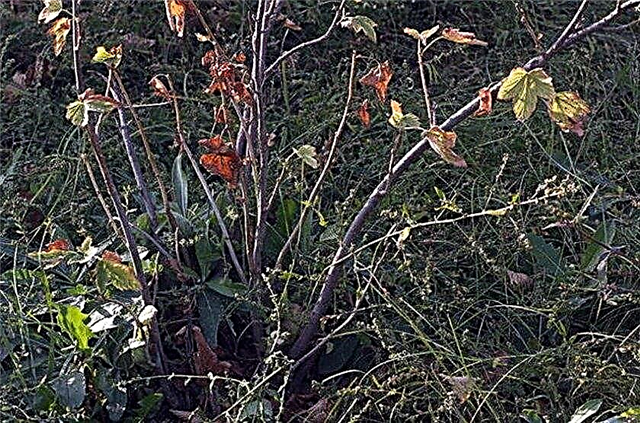
What do currant buds look like?
It is easiest to identify a pest in the fall. Then the affected kidneys swell and differ markedly from the rest.
In the autumn period, immediately after leaf fall, two types of buds can be distinguished:
- Healthy kidneys are round, slightly elongated. Do not lag behind in development and are closed by dense scales.
- Sick, deformed, round kidneys that are inflated from a large number of parasites. It is there that pests and winter.

In spring and summer, affected kidneys can be distinguished by the following signs:
- the tops of young shoots are deformed and change color;
- the leaf plate becomes tougher, acquires a light green or yellow color, while the leaves become smaller due to depletion;
- young growth ceases to grow;
- berries do not ripen - remain small and sour;
- Fading shoot growth.

Currant bush is infected by tick-borne viruses. (witch's broom, leaf reversal, double flowers). In this case, the plant urgently needs to be cut and burned, because there is no treatment for such diseases.
How to treat currants in spring from ticks and aphids
First of all, you should carefully examine all parts of the bush. Swollen kidneys are cut and burned. The currant is then treated with a suitable preparation. It is important to pay special attention to the period of migration of the pest from one kidney to another. So, by spraying, you can prevent its spread.
Chemicals
This method of combating the kidney tick is dangerous for humans, pets and birds. Before use, it is important to familiarize yourself with the rules of use of each drug, its effect and the regularity of treatments. Arachnid pests are destroyed by acaricidal and insectoacaricidal drugs.

Colloidal sulfur
The kidney mite does not tolerate the effects of this inorganic fungicide. The second name for colloidal sulfur is cumulus. It is a cheap and effective powder that can cope not only with a tick, but also with various fungal diseases. Pathogens are affected by hydrogen sulfide, which is formed by mixing dissolved sulfur with hydrogen.
Important! Colloidal sulfur should be sprayed not only the body of the bush, but also the earth around it. Such processing will be much more efficient.
The drug is recommended for use in warm and calm weather. Acceptable air temperature is + 25 ... + 30 ° С. Cumulus eliminates the development of ticks at the initial stage and is applied up to 2 times per season. It is best to process currant bushes before flowering and budding of buds.
 A spray solution is prepared according to the following instructions: 30 g of sulfur are added to a bucket of water (10 l) and mixed. The finished fluid is treated with shrubs.
A spray solution is prepared according to the following instructions: 30 g of sulfur are added to a bucket of water (10 l) and mixed. The finished fluid is treated with shrubs.
Acaricides
Substances-acaricides are of synthetic origin and are aimed exclusively at combating ticks. The most effective drugs are:
- Neoron
- Oberon
- Nissoran.
Funds are diluted in accordance with the instructions. An overdose or an increase in the concentration of the drug is unacceptable. This period lasts approximately 15–20 days (the term for the initiation of new kidneys).
 Acaricides are used at a time when the maximum number of pests are on branches, leaves and have not yet had time to "settle" in the kidneys.
Acaricides are used at a time when the maximum number of pests are on branches, leaves and have not yet had time to "settle" in the kidneys.
"Golden spark"
The Golden Spark insecticide was created on the basis of natural substances that destroy kidney mites and aphids. It is not addictive in pests and is safe for the human body. It is recommended to use the drug in hot weather (at least + 28 ° C), so it will be more effective. The method of preparation of the solution is as follows: 1 ml of "Spark" diluted in 5 liters of water, flow rate - 5 liters per 1 hundred parts of land.
 Pests die on the 1st – 2nd day after spraying.
Pests die on the 1st – 2nd day after spraying.
Tiovit Jet
The Tiovit Jet fungicide acaricide is an analog of colloidal sulfur. It has a wide spectrum of action: effective in combating all types of dew, ticks and infections of fungal origin. The recommended period of use is in spring and early summer (when the air temperature reaches + 23 ... + 27 ° C). A warm, calm morning or evening is suitable for spraying.
“Tiovit Jet” is used strictly according to the instructions, no more than three times per season. The solution is prepared at the rate of 30–80 g of substance per 10 l of water.
 The action of the drug begins 4 hours after application to all parts of the bush.
The action of the drug begins 4 hours after application to all parts of the bush.
"Fufanon"
The drug belongs to insectoacaricides and successfully fights with gnawing and sucking pests in the garden. In hot weather, treatment of affected bushes is carried out only in the morning and in the evening.
Important! Harvesting is permissible no earlier than 3 weeks after treatment with Fufanon.
Method of application: pour 2 liters of water into a bucket and pour the Fufanon ampoule (10 ml) into it, then, stirring, bring the solution to 10 liters. The consumption rate is 1.5 liters per 1 bush of currant.
 Pest death begins 30 minutes after the use of the drug.
Pest death begins 30 minutes after the use of the drug.
Apollo
Acaricidal drug that acts on the hormonal level. It does not kill pests, but only sterilizes them. So, as a result of the use of the substance, ticks cease to multiply, and their eggs become sterile. The protective effect lasts up to 1 month.

Preparation of working solution: dilute 2 ml of acaricide in 5 l of water. The consumption rate is 3 liters per 1 m² of land. The use of Apollo is recommended 1 time per season, so re-treatment can cause the pest to be resistant to this chemical.
Karbofos
A very powerful and effective insecticide that destroys ticks, moths, aphids, whiteflies and tinkers. It kills both harmful insects and beneficial ones, therefore use during the flowering period is contraindicated. It is better to spray with the beginning of the period of sap flow and with the appearance of leaves (but before the growth of flowers). The third processing is carried out 35–40 days before harvesting.
Important! "Karbofos" destroys insects and larvae only with a direct hit on them. Otherwise, if the pest managed to hide in the branches, the drug is useless.
In spring and summer, the bushes are treated in calm and warm weather (+ 14 ... + 17 ° C). To do this, 75 g of the drug is diluted in 10 liters of water. With this solution, the whole plant is sprayed.

Methods of struggle with folk remedies
To protect currants from the effects of a tick, folk methods of struggle are often used. They are both prevention and treatment, but only if the pest has not had time to thoroughly infect the culture.
Did you know? The urea solution not only fights pests, but also is an excellent fertilizer. A large concentration of nitrogen in the solution improves metabolic processes in the plant and the berries grow very sweet.
The most effective include:
- Pouring boiling water. Ticks are very sensitive to high temperatures, so at the beginning of March they pour hot water over all bushes (+ 70 ... + 75 ° С). This procedure will help to destroy sleeping pests and their larvae and increase the immunity of the plant itself. It is recommended to process several times with an interval of 4 days.
- Tincture of garlic. The most popular way among gardeners. To prepare the correct composition, you need to chop 150 g of garlic, pour 10 liters of water and insist for 2-3 hours. Then, currant bushes are sprayed with the expressed solution. After 6 days, the procedure should be repeated.
- Decoction of tobacco and onion peel. When changing the location of pests, the treatment of household waste with a strong odor is effective. 200 g of the product is poured into 1-2 liters of water and brought to a boil. Next, the concentrate is filtered, adjusted to 10 l and treated with bushes.
- Tea brewing. 20 tea leaves are brewed in 10 liters of water and infused for 24 hours. Processing is carried out twice: before budding and after flowering.
- Urea. 500 g of the drug is diluted in 10 l of warm water and a currant bush is sprayed. Such treatment is carried out in early April (before the start of sap flow). Contact with the kidney is contraindicated, since it can burn them.

Preventive measures
A number of preventive measures will help to avoid the appearance and spread of pests on berry bushes:
- it is better to buy seedlings in special stores or nurseries where they can show product certificates;
- regularly inspect garden bushes for infections;
- control humidity, i.e. in dry or waterlogged conditions, parasites appear much more often;
- regularly spray with protective equipment;
- Proper care: water, carry out sanitary pruning and remove dry leaves;
- disinfect all equipment and clothing after trimming.

Such preventive measures will help prevent the appearance of unwanted guests in fruit bushes and will have a good effect on the development of the culture itself. From the above it follows that the means of combating the kidney tick differ in the spectrum of action and effectiveness.
Based on the symptoms, it is not always necessary to resort to the use of aggressive chemicals, sometimes gentle enough folk methods. But the best, safest and very useful way for the bush to control pests is timely prevention.

